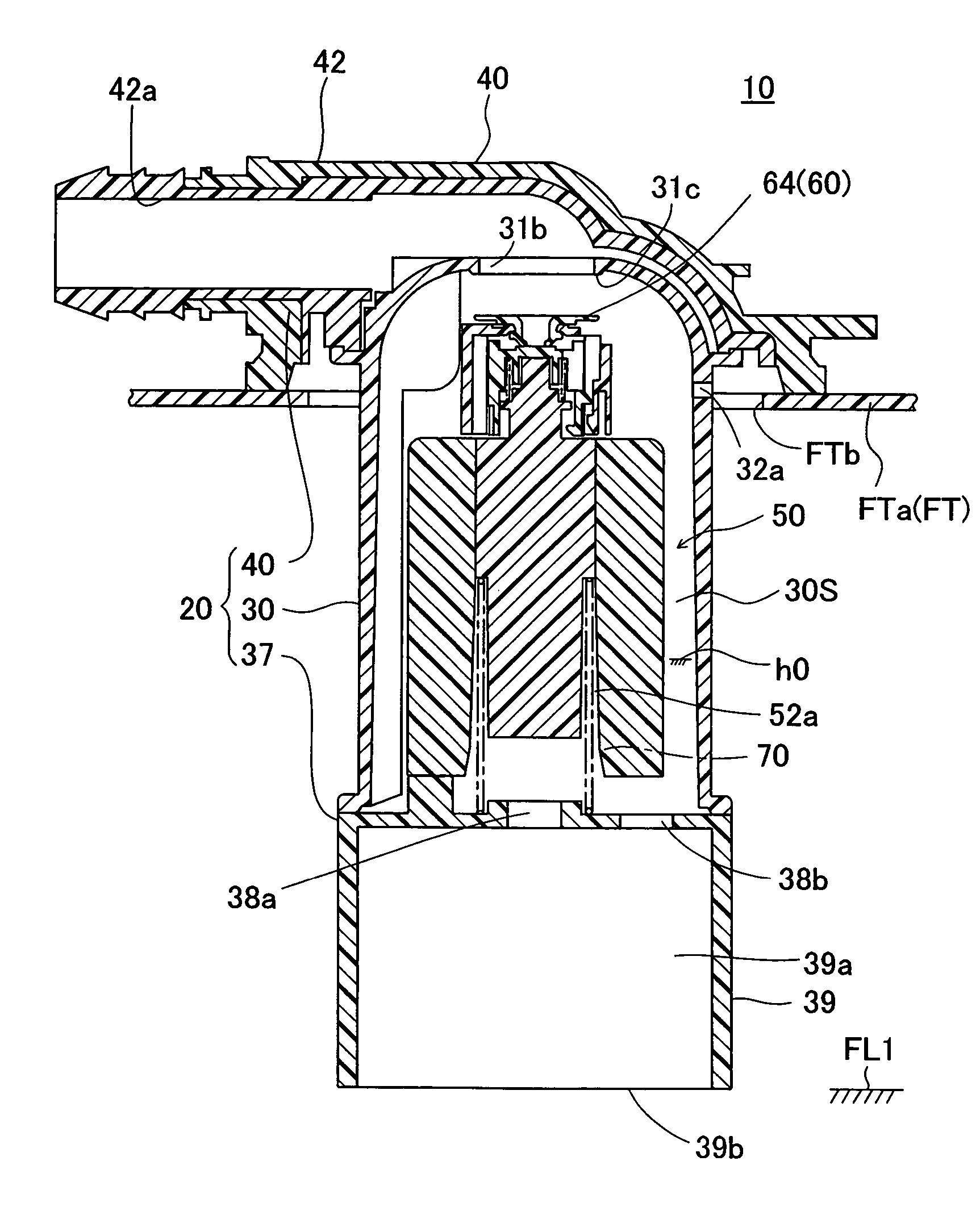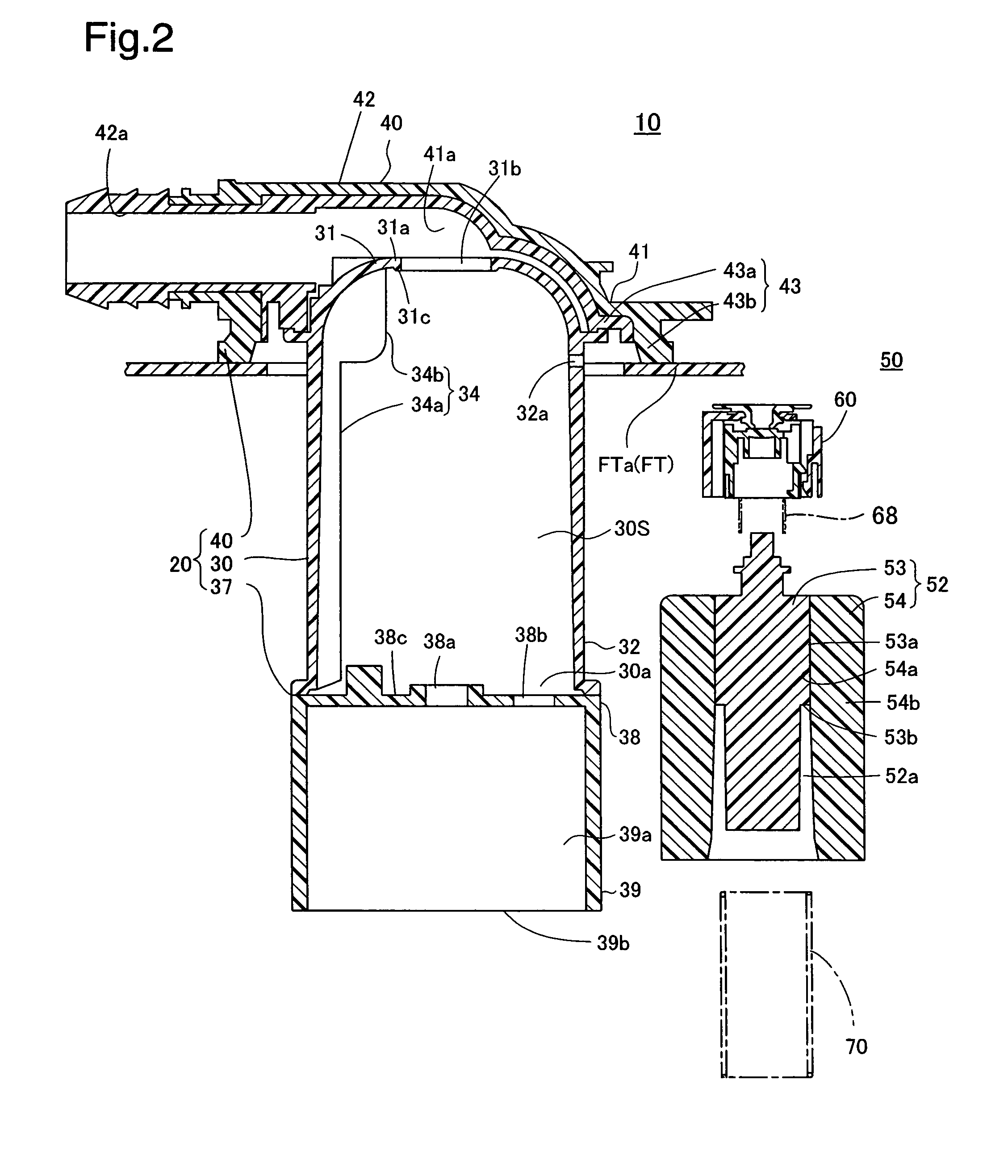Fuel cutoff valve
a technology of fuel cutoff valve and valve body, which is applied in the direction of mechanical equipment, functional valve types, transportation and packaging, etc., can solve the problems of restoring the upper portion of the valve body to the horizontal force, the sealing ability declines, etc., and achieves stable horizontal attitude, high sealing ability, and stable attitude.
- Summary
- Abstract
- Description
- Claims
- Application Information
AI Technical Summary
Benefits of technology
Problems solved by technology
Method used
Image
Examples
Embodiment Construction
(1) Simple Arrangement of Fuel Cutoff Valve 10
FIG. 1 is a sectional view depicting a fuel cutoff valve 10 pertaining to an embodiment of the invention, shown attached to the upper portion of an automobile fuel tank FT. In FIG. 1, the fuel tank FT is formed from composite synthetic resin that includes polyethylene on its surface; a mounting hole FTb is formed in the tank upper wall FTa. The fuel cutoff valve 10 is attached with the lower portion thereof being inserted into the mounting hole FTb. The fuel cutoff valve 10 functions to restrict outflow from the canister once the fuel level within the tank has reached a prescribed level during fueling.
(2) Arrangement of Parts of Fuel Cutoff Valve 10
The fuel cutoff valve 10 comprises mainly a casing 20, a float mechanism 50, and a spring 70. The casing 20 comprises a casing body 30, a base member 37, and a cover 40. The space enclosed by the casing body 30 and the base member 37 constitutes a valve chamber 30S, and the float mechanism 50,...
PUM
 Login to View More
Login to View More Abstract
Description
Claims
Application Information
 Login to View More
Login to View More - R&D
- Intellectual Property
- Life Sciences
- Materials
- Tech Scout
- Unparalleled Data Quality
- Higher Quality Content
- 60% Fewer Hallucinations
Browse by: Latest US Patents, China's latest patents, Technical Efficacy Thesaurus, Application Domain, Technology Topic, Popular Technical Reports.
© 2025 PatSnap. All rights reserved.Legal|Privacy policy|Modern Slavery Act Transparency Statement|Sitemap|About US| Contact US: help@patsnap.com



